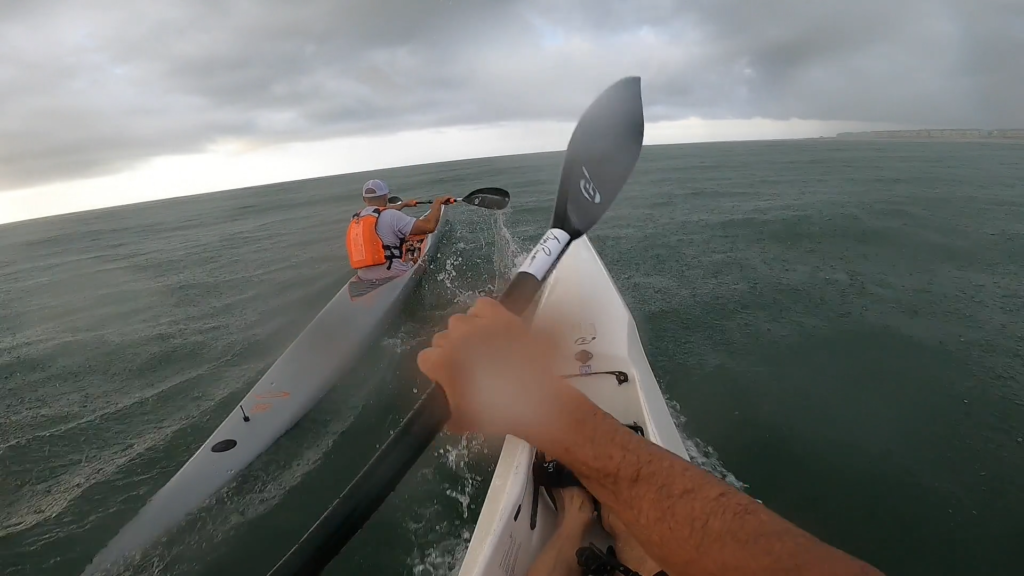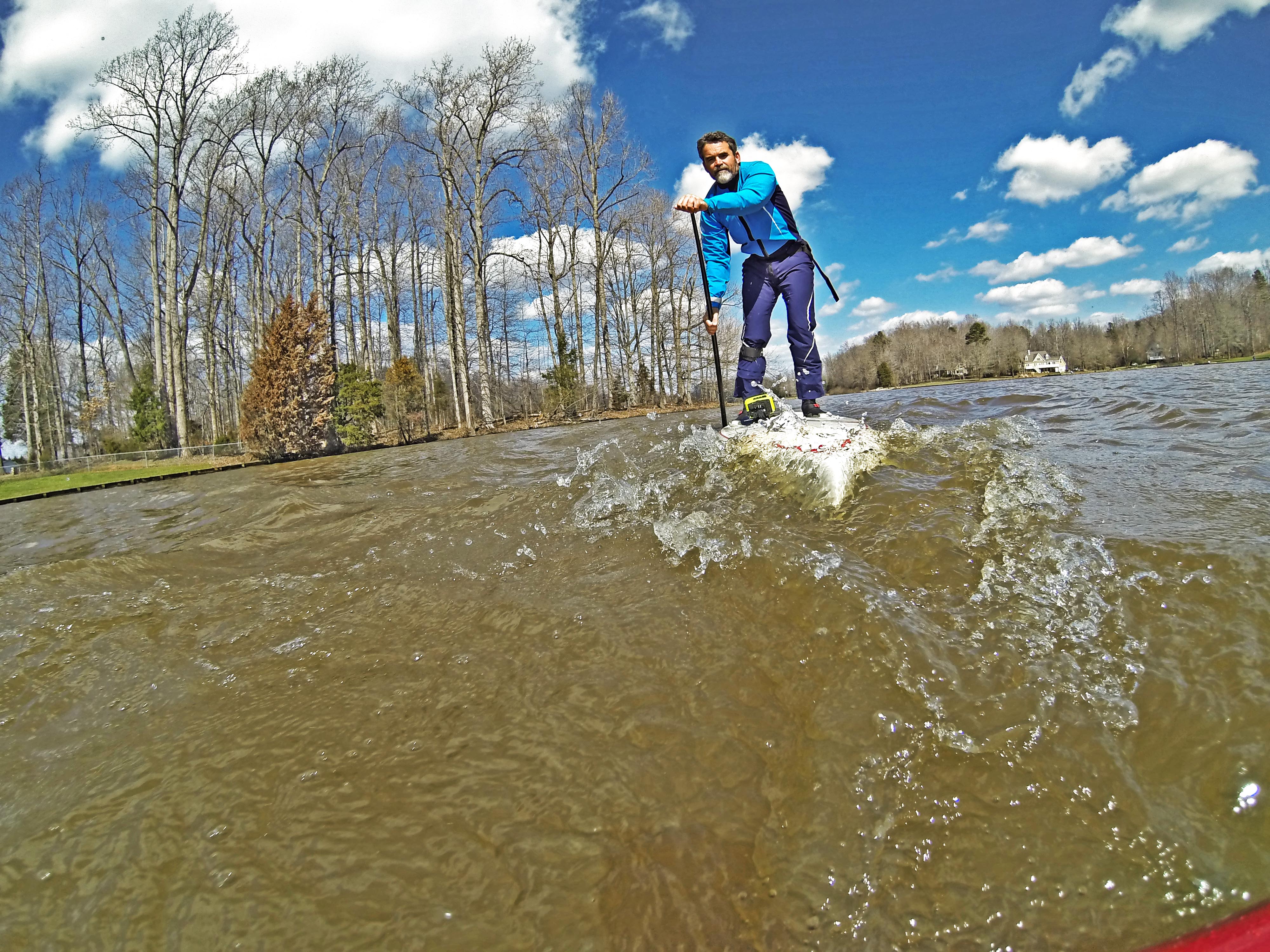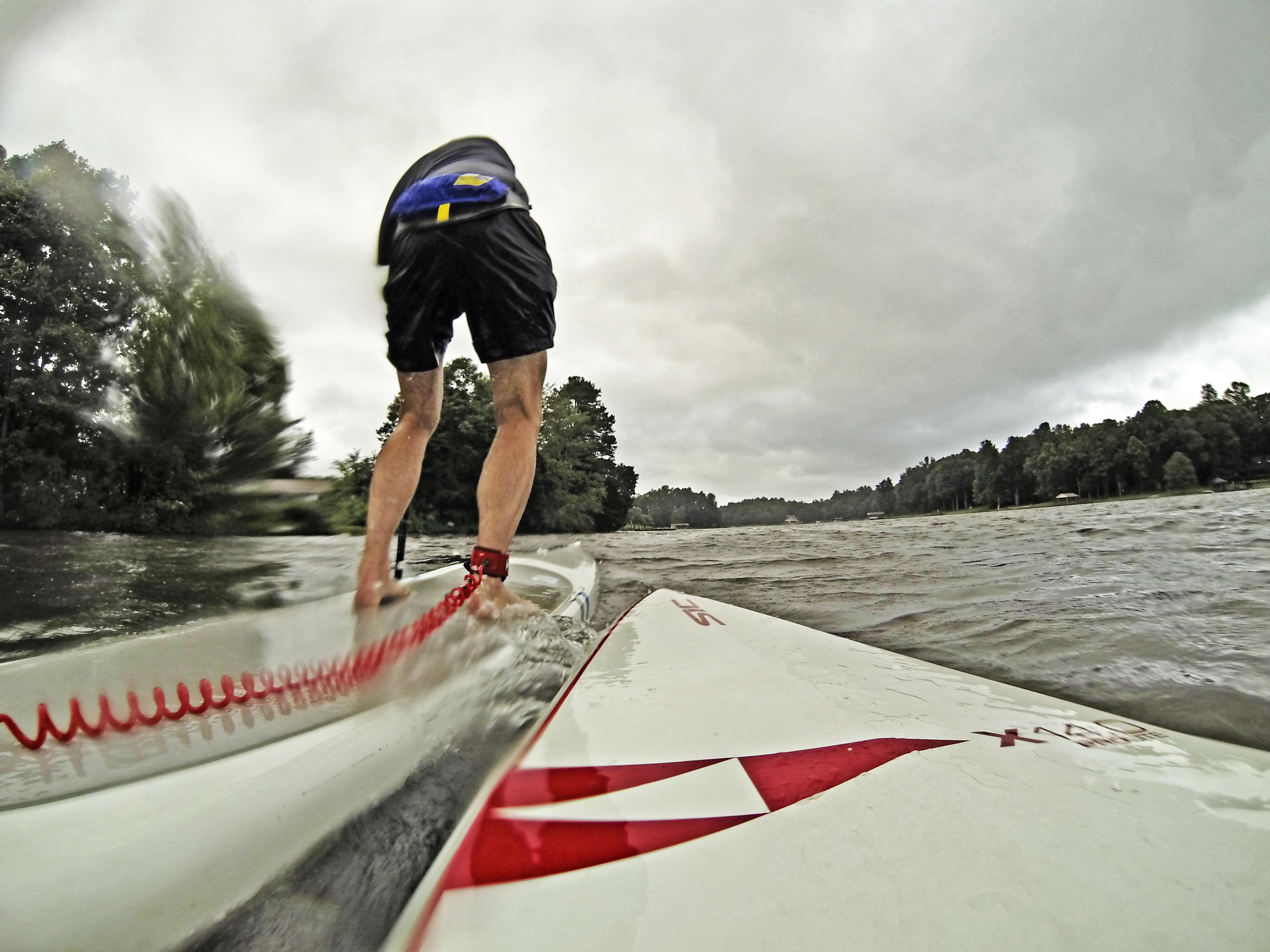
If an injury has to be done to a man, it should be so severe that his vengeance need not be feared.
I was recently watching an episode of Criminal Minds, and this advice from Niccolo Machiavelli was quoted, and of course, it made me think of racing. That’s normal, right?
(By the way, binge-watching Criminal Minds on Netflix is a pretty good way to ensure you sleep with the light on every night for the rest of your life.)
Stick with me here…
In Paddle Racing:
The Ultimate Injury = Getting Passed
During a race, there’s nothing more injurious than having a competitor pass you, especially if you’re working at max capacity. A well-timed and executed pass not only places you ahead of your competitor physically, but it also offers the opportunity to break them mentally, and that’s where races are often won or lost.
The Freight Train Approach
With the Freight Train method, you want to pass your target with so much authority:
- they hear you coming
- they see you pull past them looking strong like bull
- they watch you move on past without hesitation.
All with the feeling they can’t do a thing about it.
The mental effect you want to achieve here is, “There’s no way I can keep up with that…”
We find this method works best when you carefully set up your approach. Spot your target and reel them in, being careful not to redline your heart rate. You can move into the flatter water between the wakes to gain a little more speed, and then surge out to catch their wake and side-draft for a quick boost. Paddle by confidently. Keep your speed up until you’re 20 yards ahead, and then resume your strong race pace.
You’ll go into the orange zone with your heart rate here, and it takes some practice and training to not how to prevent over-reaching and blowing yourself up. Power Accelerations is a good workout to help prepare you for this passing approach.
If you’re up to it, feel free to drop a friendly comment as you pass by, something cheerful and encouraging, like, “What a great day!” or “You’re looking great!” or “That’s a great board (canoe, surfski, etc)!” You’ll find you can usually muster enough wind to say a short sentence, and it can really mess with the passee’s head if you sound like you’re having a great time while zooming by. You’re rolling by, and now you have them thinking, “If it’s such a great board, why isn’t it keeping up!!?!?! I HATE my board. I hate racing. Bleh.”
Or something like that.
The Slow Drop

The Slow Drop usually occurs when you’ve been working with a draft train and it’s time to peel off and slowly pull away. This approach is tough, both mentally and physically, and you better be prepared to suffer.
I call that method “Poor Manners”, and you should only use that approach if you want your exploits posted all over the internet with the hashtag #ifyouregonnadraftyougottapull. Or #jerk.
I’m talking about that race where you and your opponent have worked together to get away from the pack, taking turns drafting and working together. At some point, one of you is going to have to make a move. Enter, The Slow Drop.
The Slow Drop is best done with some distance left in the race. Halfway through your competitor’s pull at the front, or when it’s your turn to draft, turn up the intensity, pass your opponent and keep going. The point here is to punish him or her to the point they no longer want to hang on. Try to change your line enough that they cannot easily jump in behind you. This is a good method to use if there’s a section of current that can help you break contact. Once contact is broken, you can resume your strong race pace and hope you’ve made the pass so severe that vengeance need not be feared.
Obviously, this is a risky move
They could just pull in behind you and let you blow yourself to pieces. Before attempting The Slow Drop:
- Ensure you’re trained up for this method. It’s painful in every kind of way. Bridge the Gap is a good workout to help you prepare mentally and physically.
- Know your opponent. During the time you’ve worked together, pay attention to their strengths and weaknesses. Do they know how to find the current? Do they know how to handle headwind, or current flow against them? Are they a good sprinter? Do they tend to lose contact when you start to take your pull at the front of the train?
- Repeat to yourself: “I’m going to make this so severe that I do not need to worry about vengeance.” Know that you’re willing to suffer more than your opponent.
You can also perform this move from the middle of the draft train — those paddlers behind you may follow you, or they may try to fill the gap you’ve left in the train. If they follow you, you’ve splintered the train and you know have fewer competitors to deal with when you make your next strategic move. If you’re in a draft train, this may actually be preferable to pulling away solo, since you’ll have your own train to help pull away.
The Attack

The Attack can be a near-violent breakaway that creates distance between and your competitor(s). And it’s an art that needs to be studied and practiced.
If you’re a sprinter, this may be about brute force at the end of a race. If you’re a time trialist, you might use The Attack to create a gap that will allow you to win alone.
If your stability is superior, you might attack in cross-chop, creating a gap while others are losing efficiency trying to stabilize their boards.
If you’re strong in the headwind, you can attack at the start of the headwind stretch to ensure the others are just sitting behind you out of the wind. By pulling away, you can use your strength to pull ahead and take away their drafting advantage, and you can lure them into redlining while trying to keep up. Which means you’ll be able to keep your advantage when you turn out of the headwind.
If you’re weak in the headwind, start at the head of the pack at the beginning and slowly drift back to conserve energy. If you do this correctly, you may be able to execute an attack when you’ve turned out of the headwind. Remember, though — take your time at the front, or have your teammates pull their fair share.
Incorporating a workout like Short Attack Intervals into your training plan will help prepare you mentally and physically for The Attack.
Know What Works for You
There may come a race in which you’ll have an opportunity to use some of all of these methods of passing. You need to know your own strengths and your opponent’s strengths (for example, if I know my opponent is a great sprinter, I’m more likely to try The Slow Drop well before the end of the course.) You need to know the conditions and the course. You need the confidence of knowing you’ve trained mentally and physically for the passing game.
But more than anything else, always pass in such a way that is “so severe” that vengeance need not be feared.
If you find this article or these articles helpful, be sure to tag #thepaddlechannel in your training and race photos — we would love to see who is using this stuff!







